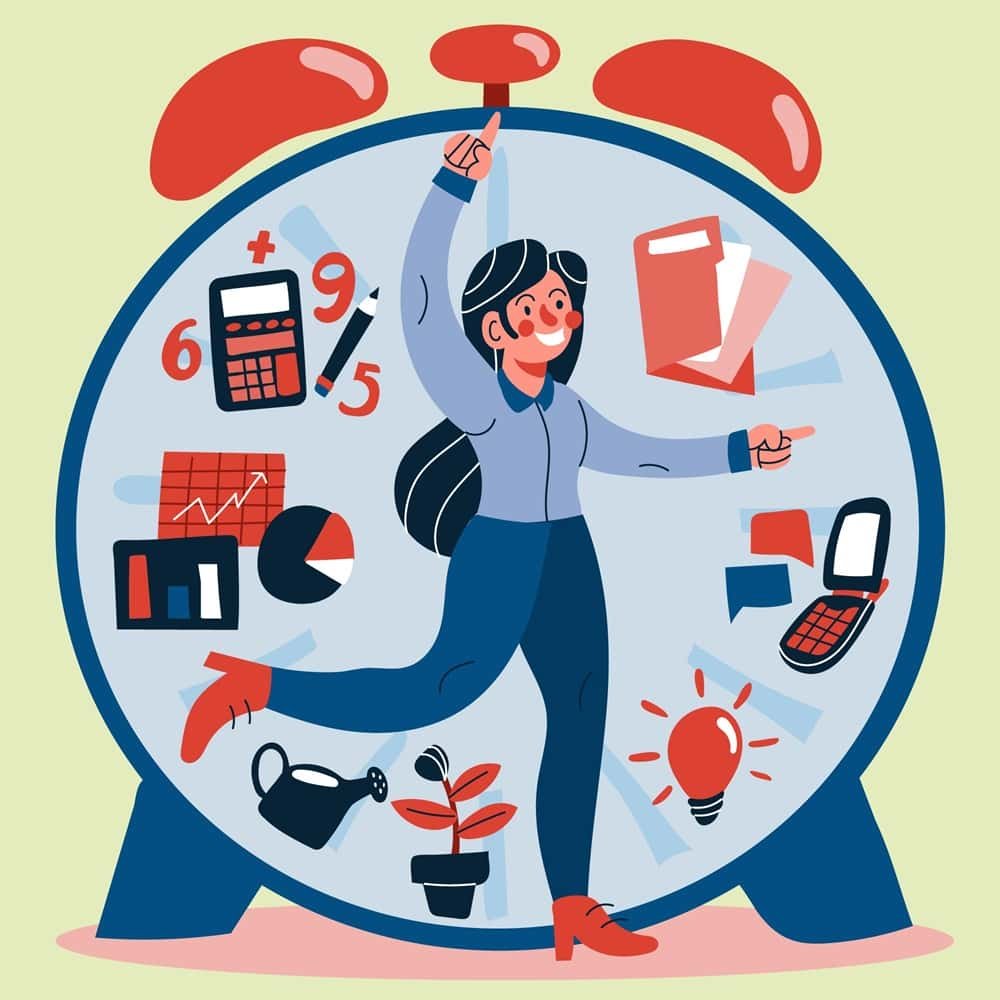12 Creative Exercises You Can Do in Five Minutes or Less (And Why You Should)
Creativity can often feel like a luxury in our hyper-scheduled, always-on world. We tell ourselves we don’t have the time, the energy, or the right environment to tap into our imaginative reserves. But the truth is, creativity is a muscle. It needs to be exercised regularly to stay strong and agile. And, contrary to popular belief, you don’t need hours of uninterrupted solitude to get your creative juices flowing.
This blog post offers 12 quick and effective creative exercises you can seamlessly integrate into your daily routine. Each exercise is designed to be completed in five minutes or less, making them perfect for squeezing into your lunch break, before your next meeting, or even while waiting in line. Let’s unlock your creative potential, one bite-sized exercise at a time!
12 Creative Exercises You Can Do in Five Minutes or Less

Why Bother with Short Bursts of Creativity?
Before we dive into the exercises, it’s important to understand why these short bursts of creativity are so valuable. Here are just a few benefits:
- Boosts Problem-Solving Skills: Creative thinking isn’t just for artists. It helps you find innovative solutions to everyday problems, both personal and professional.
- Enhances Focus and Concentration: Actively engaging your imagination forces you to focus and block out distractions, improving your overall concentration.
- Reduces Stress and Anxiety: Creative pursuits offer a healthy outlet for emotions and a way to escape the pressures of daily life.
- Increases Self-Confidence: Completing even small creative tasks can boost your self-esteem and make you feel more capable.
- Sparks New Ideas: Short exercises can act as catalysts for larger, more ambitious projects, helping you overcome creative block.
- Breaks Up Monotony: Introducing moments of creativity into your routine can break up the monotony of everyday tasks and make life more enjoyable.
Now, let’s get creative! Here are 12 exercises you can try today:
1. Visual Associations (5 minutes)
- What it is: A simple exercise that encourages you to connect seemingly unrelated images or objects.
- How to do it: Choose a random object in your immediate surroundings (a pen, a coffee cup, a stapler). Now, write down five completely unrelated words that come to mind when you look at the object. Then, challenge yourself to connect those words in a short story or idea.
- Example: Object: Pen. Words: Ocean, Rocket, Music, Sadness, Cloud. Possible connection: “The pen felt like a rocket, launching him into the vast ocean of his memories. The music of the waves only amplified the sadness swirling around him, as thick and heavy as a gray cloud.”
- Benefit: Helps you break free from linear thinking and make surprising connections.
2. Headline Generator (3 minutes)
- What it is: An exercise in concise and compelling writing, perfect for practicing your marketing or persuasive language skills.
- How to do it: Pick a mundane object or event (e.g., doing the dishes, taking the bus, brushing your teeth). Come up with five different headlines for an article or advertisement about it. Aim for catchy, intriguing, or even humorous headlines.
- Example: Object: Brushing your teeth. Headlines: “Brush Away Bad Breath and Bad Dates!”, “The Secret Weapon in Your Morning Routine”, “Is Your Toothbrush Sabotaging Your Health?”, “Beyond Mint: Rethinking Oral Hygiene”, “The Surprising Link Between Gum Health and Overall Well-being”.
- Benefit: Improves your ability to communicate effectively and grab attention.
3. Word Prompts (5 minutes)
- What it is: A classic writing exercise that uses random words to spark creativity.
- How to do it: Generate three random words (use a random word generator online or simply pick three words from a book). Use those three words as a starting point for a short poem, story snippet, or even a product idea. Don’t overthink it, just let the words guide you.
- Example: Words: Clock, Feather, Whisper. Possible Story Snippet: “The grandfather clock ticked slowly, each second echoing in the silent room. A single feather drifted down, landing softly on the polished wood. He leaned closer, straining to hear the whisper carried on the wind – a secret, a warning, or just the rustling of leaves?”
- Benefit: Overcomes writer’s block and encourages imaginative storytelling.
4. Draw a Doodle and Run With It (5 minutes)
- What it is: A visual exercise that transforms a simple doodle into something more elaborate.
- How to do it: Start with a random, abstract doodle – a squiggle, a circle, a line. Then, without erasing, add to that doodle, transforming it into a recognizable object, character, or scene.
- Example: Start with a spiral. Add a face, ears, and a tail to turn it into a snail.
- Benefit: Unlocks your visual imagination and encourages spontaneous creation.
5. “What If?” Scenarios (3 minutes)
- What it is: A thought experiment that challenges you to imagine alternative realities.
- How to do it: Ask yourself a “What if?” question about a common situation or event. For example, “What if animals could talk?” or “What if gravity suddenly reversed?” Spend a few minutes brainstorming the potential consequences and implications of that scenario.
- Example: What if plants could think? Brainstorming: They might develop communication networks, control the climate, or even fight back against human encroachment.
- Benefit: Expands your perspective and encourages innovative thinking about the world around you.
6. Alternate Uses (5 minutes)
- What it is: A brainstorming exercise that forces you to think outside the box.
- How to do it: Pick a common object (a paperclip, a brick, a rubber band). List as many alternative uses for that object as you can think of, no matter how ridiculous.
- Example: Object: Paperclip. Alternative Uses: Lock pick, miniature sculpture, emergency zipper pull, hair tie substitute, cleaning tool for small crevices.
- Benefit: Improves your problem-solving skills and encourages you to see things from a different perspective.
7. Sensory Description (4 minutes)
- What it is: An exercise in vivid language and attention to detail.
- How to do it: Choose a nearby object or environment (your desk, the view from your window, your cup of coffee). Spend four minutes writing down detailed descriptions of that object or environment, focusing on all five senses: sight, sound, smell, taste, and touch.
- Example: Describing a cup of coffee: “The dark liquid swirls in the chipped ceramic mug, releasing a rich, earthy aroma that fills the air. The first sip is a jolt of bitterness that quickly gives way to a warm, comforting sweetness. The heat radiates through the mug, warming my hands.”
- Benefit: Enhances your descriptive writing skills and sharpens your sensory awareness.
8. One-Word Story (2 minutes)
- What it is: A minimalist writing exercise that challenges you to tell a story using only one word at a time.
- How to do it: Start with a single word. Then, write the next word that comes to mind, building a story one word at a time. Don’t plan ahead, just let the words flow.
- Example: Started with “Yesterday.” Story: “Yesterday…rain…fell…silent…tears…washing…away…memories…fading…hope…remains.”
- Benefit: Encourages spontaneous storytelling and forces you to be concise.
9. Color Associations (3 minutes)
- What it is: An exercise that explores the emotional and cultural associations of colors.
- How to do it: Choose a color. List five words or phrases that you associate with that color. Then, write a short poem or paragraph using those associations.
- Example: Color: Blue. Associations: Calm, Ocean, Sadness, Royalty, Trust. Paragraph: “Blue, the color of a tranquil ocean, promises calm. Yet, beneath the surface lies a hint of sadness, a reminder of the vast unknown. Blue, once reserved for royalty, now signifies trust and dependability.”
- Benefit: Deepens your understanding of color psychology and enhances your ability to use color effectively in your creative work.
10. Imaginary Product Design (5 minutes)
- What it is: A brainstorming exercise that encourages you to invent new and innovative products.
- How to do it: Think about a common problem you face in your daily life. Design a product that solves that problem. Sketch it out, describe its features, and even come up with a name and tagline.
- Example: Problem: Tangled charging cables. Product: “Cable Cozy,” a small, self-winding cable organizer with magnetic clips. Tagline: “Untangle your life, one cable at a time!”
- Benefit: Stimulates your problem-solving skills and encourages entrepreneurial thinking.
11. Alternate Ending (5 minutes)
- What it is: A literary exercise that challenges you to rewrite the ending of a familiar story.
- How to do it: Think of a well-known fairy tale, movie, or book. Imagine an alternative ending. How would the story change if the ending were different?
- Example: Alternate Ending for “Little Red Riding Hood”: Instead of being rescued by the woodcutter, Little Red Riding Hood outsmarts the wolf, using her knowledge of the forest to trap him and escape.
- Benefit: Enhances your storytelling skills and encourages you to think critically about narrative structure.
12. Six-Word Memoir (2 minutes)
- What it is: A minimalist writing exercise that challenges you to summarize your life in just six words.
- How to do it: Reflect on your experiences, values, and aspirations. Then, distill your essence into a concise and impactful six-word phrase.
- Example: “Lived. Loved. Learned. Still learning.”
- Benefit: Promotes self-reflection and encourages you to identify your core values.
Making Creativity a Habit
The key to unlocking your creative potential is consistency. Don’t just try these exercises once and forget about them. Make them a regular part of your daily routine. Start with one or two exercises that resonate with you and gradually incorporate others.
Experiment with different times of day to see when you’re most creative. Some people find that morning is the best time, while others prefer the afternoon or evening. The important thing is to find a time that works for you and stick to it.
Remember, the goal is not to create masterpieces. The goal is to exercise your creative muscles, spark new ideas, and have fun. So, relax, let go of your inhibitions, and embrace the power of short bursts of creativity. You might be surprised at what you discover.
Also Read,


